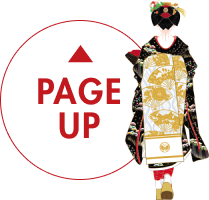TOPICS
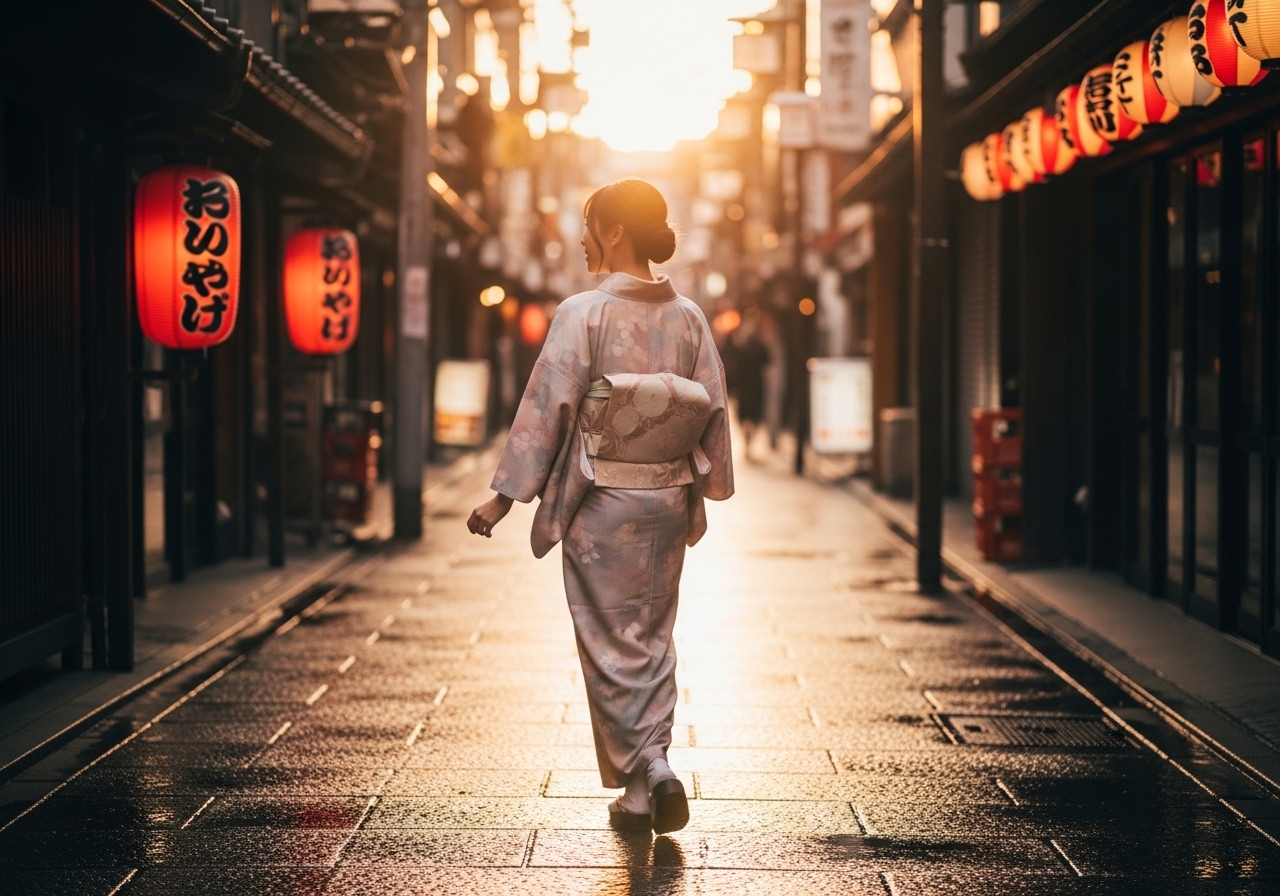
The Most Instagrammable Kimono Spots in Osaka
Japan’s kimono culture is more alive than ever — and nowhere is it more photogenic than in Kyoto and Osaka.
From ancient temples and stone-paved streets to modern art cafés and riverside walks, these two Kansai cities offer endless backdrops for kimono photos that feel timeless yet stylish.
If you’re planning a trip in 2025, this guide will take you to the most authentic, Instagram-worthy spots to capture Japan’s cultural soul — one kimono snap at a time.
???? 1. Kyoto’s Gion District — Where Tradition Meets Grace
If you could photograph the word “elegance,” it would look like Gion.
This historic neighborhood, filled with wooden machiya townhouses, paper lanterns, and geisha teahouses, is Kyoto’s cultural heart.
Best photo spots: Hanamikoji Street (especially at dusk when lanterns light up), Shirakawa Canal with its willow trees, and Tatsumi Bridge — one of Kyoto’s most iconic kimono scenes.
Kimono rental nearby: Yume Kyoto Gion and Kyoto Kimono Rental Wargo both offer high-quality silk options and hairstyling.
Pro tip: Visit early morning (7–8 a.m.) before tour groups arrive — the light is soft, the streets are quiet, and your photos will look cinematic.
???? 2. Kiyomizu-dera Temple — Kyoto’s Majestic Overlook
Perched on a hill overlooking the city, Kiyomizu-dera is one of the most photographed sites in Japan.
Wearing a kimono here adds a dreamlike contrast — ancient wood against colorful silk.
Best photo angles: From the Otowa Waterfall path looking up at the main stage, or from the Kiyomizu Stage itself with the city skyline behind you.
Nearby cafés: % Arabica Kiyomizu and Kiyomizu Saryo serve matcha with panoramic views — perfect for a soft-focus lifestyle shot.
Insider tip: Spring cherry blossoms (late March–early April) and autumn foliage (mid-November) are peak kimono photo seasons.
???? 3. Yasaka Pagoda & Ninenzaka-Sannenzaka Streets — The Classic Kyoto View
Between Kiyomizu-dera and Yasaka Shrine, these stone-paved lanes curve gracefully downhill — one of Kyoto’s most beloved views.
The five-story Yasaka Pagoda rising behind traditional houses has become the kimono shot for Instagram travelers.
Best time: Early morning or golden hour at sunset.
Kimono styling idea: Light pastel tones like lavender or sky blue harmonize beautifully with the wooden scenery.
Nearby rental: Okamoto Kimono Gion Store offers vintage-style kimonos perfect for this atmosphere.
???? 4. Arashiyama Bamboo Grove — Nature’s Green Corridor
Walk beneath towering stalks of bamboo and you’ll feel like stepping into a Studio Ghibli film.
The Arashiyama Bamboo Grove, west of Kyoto, is breathtaking in every season.
Photo tips: The path near Nonomiya Shrine has the most balanced light for photography.
Nearby attraction: Togetsukyo Bridge — another must-visit for kimono photos with river reflections and mountains in the background.
Kimono rental: Arashiyama Kimono Forest (at Randen Station) offers rental services and a stunning display of illuminated kimono-patterned pillars.
☕ 5. Nishiki Market & Teramachi Area — Modern Kyoto Vibes
For a more urban aesthetic, Nishiki Market and Teramachi Street mix modern cafés and artisan boutiques with historical architecture.
It’s the perfect spot for casual kimono looks — shorter sleeves, colorful obi belts, and playful accessories.
Must-try café: Walden Woods Kyoto — minimalist white interior and hand-dripped coffee, ideal for lifestyle-style shots.
Pro tip: Go after 4 p.m. when sunlight streams through the roof for dramatic backlighting.
???? 6. Osaka Castle Park — Heritage in the Heart of the City
Move to Osaka, and you’ll find tradition framed by skyline.
Osaka Castle Park combines vast green lawns, moats, and stone walls — a rare blend of nature and urban history.
Photo idea: Capture yourself in a kimono under cherry blossoms with the castle in the distance (early April is peak).
Rental service: Wargo Osaka Castle offers kimono and samurai-style attire for couples or family photos.
Nearby stop: Osaka Museum of History gives elevated city views with fewer crowds.
???? 7. Hozenji Yokocho & Dotonbori — Osaka’s Nighttime Glow
Want something cinematic and urban?
Slip into a kimono and stroll through Hozenji Yokocho, a narrow lantern-lit alley hidden near the chaos of Dotonbori.
Mossy stone paths, dim lanterns, and the scent of incense make this one of Osaka’s most atmospheric backdrops.
Best time: After sunset — the contrast of silk against warm streetlights is unbeatable.
Kimono idea: Deep red, black, or indigo tones pop beautifully under neon lights.
Nearby treat: Try Hozenji Mizukake Fudo, a small temple where visitors splash water on statues for luck.
???? 8. Nakazakicho — Osaka’s Bohemian Kimono Spot
For an alternative, artsy vibe, head to Nakazakicho, near Umeda.
Once a postwar neighborhood, it’s now full of vintage stores, tiny cafés, and pastel murals — perfect for modern kimono photography.
Best café photo spots: Salon de AManTo (bohemian teahouse) and Nekocafe Temari.
Styling idea: Mix modern and traditional — pair a kimono with sneakers or a beret for a playful 2025 look.
Rental option: Kimono Modern Osaka offers hybrid kimono-jacket outfits for Instagram creators.
???? 9. Kyoto Railway Museum & Umekoji Park — Retro Meets Minimalism
This is an underrated Kyoto gem.
The Kyoto Railway Museum, with its brick façades and polished metal trains, creates a nostalgic, cinematic contrast to soft kimono fabrics.
Next door, Umekoji Park adds greenery and open skies — ideal for couple or family portraits.
Photo note: Golden-hour lighting reflects beautifully off the museum glass and nearby pond.
Nearby attraction: Kyoto Aquarium adds modern contrast if you want to pair tradition with urban life.
???? Final Tips for a Perfect Kimono Day
Best rental time: Morning (9–10 a.m.) — you’ll have time for multiple locations.
Footwear: Choose zori or comfortable sandals; both Kyoto and Osaka involve a lot of walking.
Weather: Spring (March–April) and Autumn (October–November) are ideal. Avoid humid July–August unless you choose a lightweight yukata.
Respectful behavior: Avoid eating or smoking while walking in kimono, and be mindful around temples and private properties.
✨ Final Reflection
Wearing a kimono in Kyoto or Osaka isn’t just about looking beautiful — it’s about connecting with Japan’s rhythm of time.
The rustle of silk, the weight of tradition, the warmth of the afternoon light on wooden walls — all of it becomes part of your memory.
In 2025, as cultural travel continues to evolve, these cities remain proof that old and new Japan can coexist beautifully.
And with the right kimono, your photo becomes more than a picture — it becomes a story you can wear.
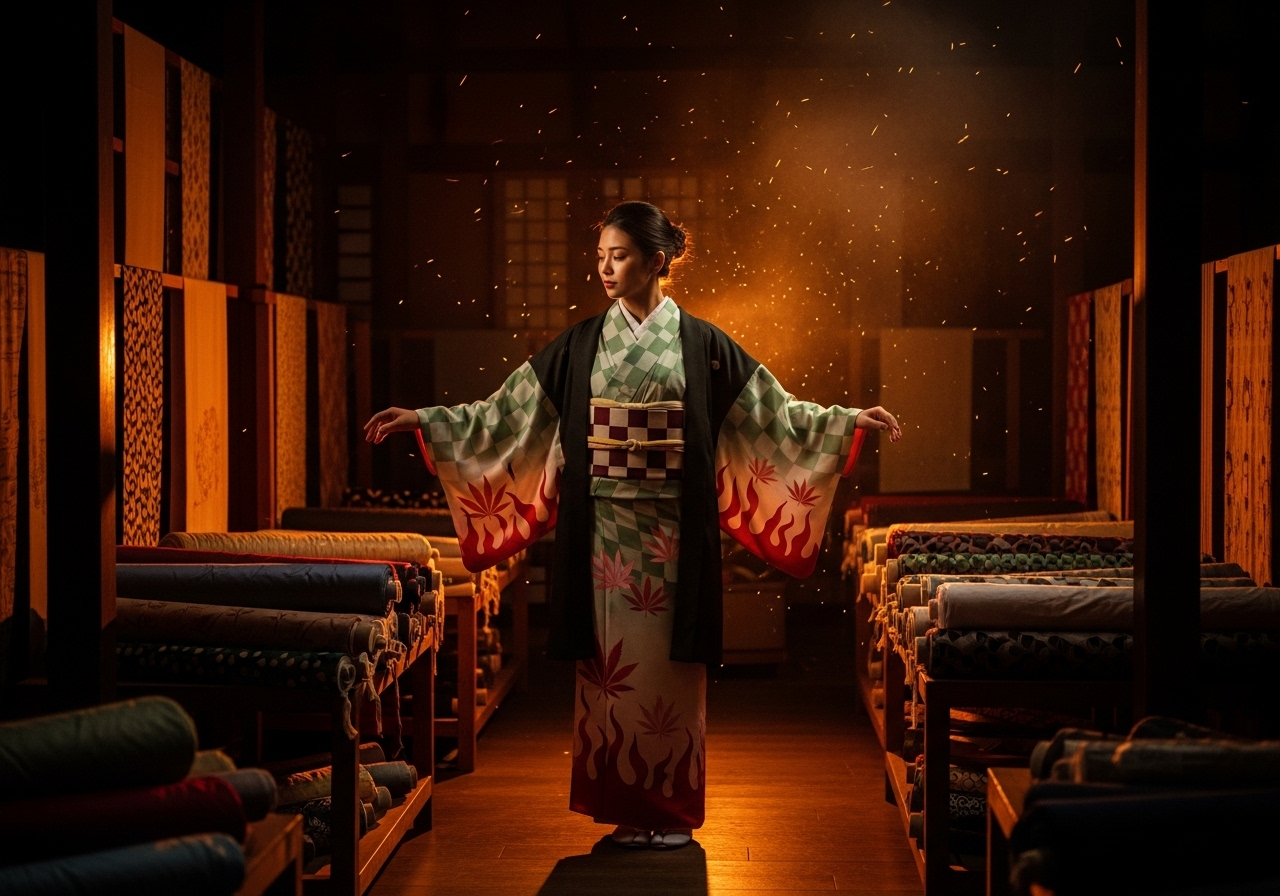
Demon Slayer and the Global Revival of Kimono Culture
When Demon Slayer: Kimetsu no Yaiba first aired in 2019, most people saw it as a breathtaking action anime.
What few realized was that it would ignite something far beyond the screen —
a global revival of Japan’s traditional kimono culture.
From Kyoto’s textile workshops to anime conventions in New York and Paris,
the ripple effect of Demon Slayer has turned a centuries-old garment into a modern icon once again.
???? 1. From Period Drama to Pop Culture Phenomenon
Set during Japan’s Taisho era (1912–1926), Demon Slayer blends historical realism with mythic storytelling.
Every detail — from wooden houses to swordsmith villages — is grounded in Japanese craftsmanship.
But it’s the kimono designs that breathe authenticity into the world.
Each major character wears a distinct haori or kimono patterned with traditional motifs —
not just for aesthetic beauty, but to convey values and emotion.
Tanjiro’s green-and-black checkered ichimatsu design stands for “continuity and perseverance.”
Nezuko’s pink asanoha pattern, shaped like hemp leaves, symbolizes growth and protection.
Rengoku’s blazing flame motif captures moral strength and sacrifice.
These motifs are drawn directly from Edo-period textiles —
and their revival in animation reconnected global viewers with a visual heritage that Japan itself was beginning to forget.
???? 2. A Surge in Kimono Interest and Sales
The cultural impact was immediate.
By 2021, Kyoto-based fabric retailers reported double-digit sales growth in traditional patterns featured in the series.
Online searches for “kimono pattern Demon Slayer” surged more than 700% worldwide,
and Japanese craft markets began selling hand-dyed replicas of Tanjiro’s and Nezuko’s outfits.
In Asakusa and Gion, kimono rental shops started offering “Demon Slayer Style Plans,”
where visitors could rent haori inspired by the show’s characters —
a fusion of tourism, fashion, and pop culture that appealed especially to young travelers.
Even UNESCO cultural programs took note.
Textile artisans in Nishijin (Kyoto) credited the anime with “bringing a lost generation back to kimono appreciation.”
???? 3. The Globalization of a Traditional Art
What’s remarkable is how Demon Slayer transformed the kimono from a symbol of tradition into a global fashion statement.
International designers — from London streetwear brands to Korean couture labels — began referencing its patterns and silhouettes.
In 2022, Paris Fashion Week featured several kimono-inspired coats and layered robes,
with critics describing them as “anime couture.”
The Demon Slayer aesthetic — graphic geometry, dramatic layering, and spiritual symbolism —
fit perfectly into the global appetite for storytelling through fashion.
Brands such as UNIQLO, GU, and Hot Topic released licensed kimono jackets,
bridging the gap between casual wear and cultural tribute.
???? 4. Reviving Traditional Craftsmanship
Beyond fandom, something more profound was happening inside Japan.
Artisans from Kyoto’s Nishijin weaving district and Okinawa’s Bingata dyeing studios reported renewed interest from young apprentices —
a profession once considered to be fading.
Workshops that had been struggling to attract visitors suddenly found queues of students,
inspired by the idea that ancient textile art could live again through modern media.
The Kyoto Prefectural Textile Association even launched an exhibit titled
“Kimono in Anime: From Screen to Silk,”
featuring real garments woven using the same patterns seen in Demon Slayer and Spirited Away.
Attendance exceeded 200,000 visitors — many of them under 30.
???? 5. Symbolism That Transcends Borders
Why does the kimono resonate so deeply across cultures?
Because it represents something universal: identity expressed through craft.
In Demon Slayer, the kimono is not a costume — it’s a soul.
Each color, fold, and fabric layer reflects moral values: compassion, duty, courage, and grief.
For global audiences, these are not “Japanese-only” themes; they are human.
When fans cosplay as Nezuko or Tanjiro, they aren’t just mimicking appearances —
they’re stepping into a moral world where every pattern tells a story.
That emotional connection makes the kimono more than fashion; it becomes a language of empathy.
???? 6. Tourism, Economy, and the “Kimono Renaissance”
Japan’s tourism board quickly noticed the trend.
Between 2022 and 2024, kimono rental shops in Kyoto, Nara, and Kanazawa reported record bookings from overseas visitors.
Many tourists specifically requested “anime-style” kimono —
not as novelty, but as a bridge to cultural immersion.
Travel agencies began curating “Demon Slayer Trails” across Japan:
visiting Mount Kumotori (Tanjiro’s home inspiration),
Tokyo’s Kimetsu Café, and traditional dyeing studios in Kyoto.
The result: a new form of cultural tourism where pop culture leads visitors back to authentic heritage.
Even rural prefectures like Tottori and Yamagata, known for historical weaving,
saw increased local revenue as kimono artisans collaborated with animation studios.
????️ 7. Cultural Preservation Through Pop Culture
Rather than “commercializing” tradition, Demon Slayer reframed it.
It made young people proud of their culture again —
reminding Japan and the world that the kimono can evolve without losing its essence.
“We used to see the kimono as something formal, something distant,”
says Kyoto-based dyer Kazuhiro Yoshida.
“Now, when young people see these designs in anime, they see courage, not constraint.
That gives our craft a future.”
✨ 8. The Future of the Kimono in Global Fashion
As sustainable fashion gains momentum, the kimono — a garment designed to last for decades and be repaired, resized, and reused — is reemerging as an eco-conscious symbol.
Its revival through anime has aligned perfectly with global interest in slow fashion and cultural authenticity.
In 2025, exhibitions in London and Los Angeles titled “Kimono Reimagined”
showcase both historical pieces and modern adaptations inspired by Demon Slayer and other anime.
The message is clear: the kimono isn’t a relic — it’s a revolution.
???? Final Reflection
From the battlefields of Taisho-era fiction to the streets of Shibuya and Paris,
the kimono has reclaimed its voice.
Demon Slayer didn’t just make viewers cry —
it made them care about an ancient craft, about color and pattern as symbols of hope.
In a world obsessed with fast fashion and digital speed, the kimono’s calm precision feels like resistance —
a reminder that true beauty is woven slowly, by hand, through stories worth remembering.
The flame of Rengoku still burns —
not only in hearts, but in threads.
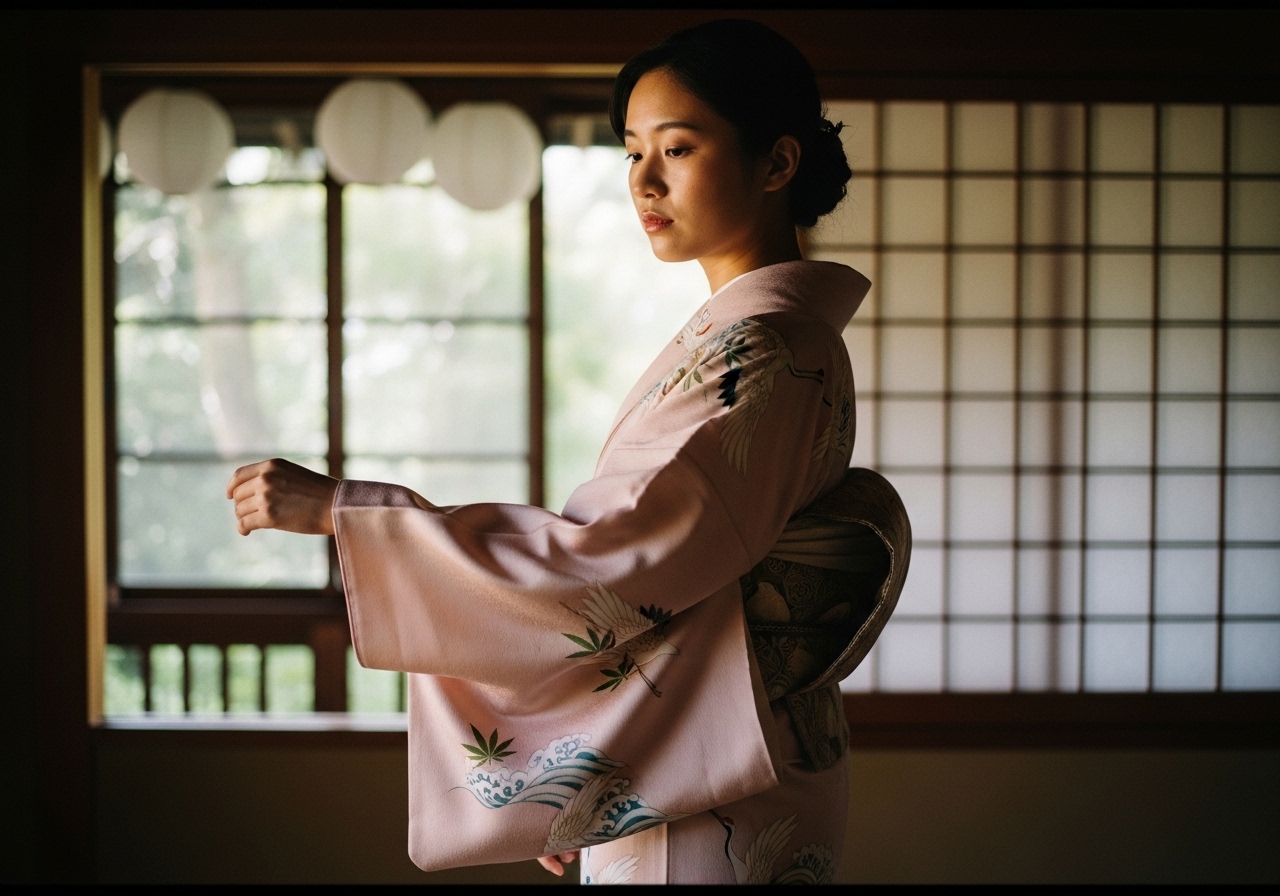
The Hidden Meaning Behind Kimono Outfits in Anime and Manga
In anime and manga, clothing isn’t just about aesthetics — it’s a form of language.
Every fold of silk, every brushstroke of pattern carries centuries of meaning.
And when it comes to the kimono, that meaning runs especially deep.
The kimono, long a symbol of elegance, hierarchy, and seasonality in Japan, has become a storytelling tool in modern animation.
Through its colors and motifs, anime artists reveal who a character truly is — not just how they look, but how they feel.
???? 1. The Kimono as Emotional Symbolism
A kimono moves like emotion.
Its flowing sleeves mirror hesitation; its layered fabric conceals vulnerability.
In traditional Japanese theatre (Noh and Kabuki), the color and motion of garments were carefully chosen to express states of mind.
Modern anime inherited that discipline.
When a character wears a kimono, it’s rarely random.
The design communicates values — purity, courage, melancholy, transformation — even before a single word is spoken.
???? 2. Demon Slayer: Patterns That Speak
Perhaps no series captures this better than Demon Slayer: Kimetsu no Yaiba.
Every protagonist wears a haori or kimono that acts as a mirror of their soul.
Tanjiro’s checkered green-and-black pattern, known as ichimatsu, symbolizes the eternal balance between life and death — the perfect metaphor for a boy who lives between the worlds of humans and demons.
Nezuko’s pink kimono, adorned with a hemp-leaf motif (asanoha), represents growth, protection, and resilience — a quiet reminder of her purity despite her transformation.
Rengoku’s flame-patterned robes embody devotion and passion, burning bright even in tragedy.
And Shinobu Kocho’s butterfly sleeves — graceful yet lethal — visualize compassion wrapped around vengeance.
These aren’t just artistic flourishes.
They are extensions of identity — a visual poetry that tells the viewer who these characters are and what they carry.
???? 3. Spirited Away: The Kimono as Transformation
Studio Ghibli’s Spirited Away uses the kimono as a symbol of growing up.
When Chihiro arrives in the spirit world, her dull everyday clothes mark her as a child.
But once she dons a simple pink work kimono at the bathhouse, her silhouette softens — she looks more humble, more in tune with the world around her.
That change of clothing signifies her emotional maturity.
As the film unfolds, her kimono becomes dirtied, wrinkled, lived-in — just like her journey.
The garment grows with her, turning a uniform into a metaphor for courage and adaptation.
???? 4. Jujutsu Kaisen and Bleach: Power Through Tradition
Even in modern-action anime, kimono aesthetics persist.
In Jujutsu Kaisen, Gojo Satoru’s layered uniforms draw subtle inspiration from haori and hakama silhouettes — modern reinterpretations of spiritual armor.
In Bleach, captains wear flowing white coats modeled after priestly robes, echoing the Shinto ideal of purification before battle.
This visual continuity — old forms reborn in new contexts — allows the kimono to stay timeless.
It’s tradition, reimagined through movement and power.
???? 5. Naruto: The Cloak of Legacy
Even Naruto, a series grounded in ninja mythology, carries echoes of the kimono’s symbolism.
The robes worn by Hokage and clan elders are styled after ceremonial uchikake, their sweeping hems symbolizing authority and generational continuity.
When Naruto finally dons his orange-and-white cloak, it’s not just a costume upgrade — it’s a rite of passage.
He has inherited a legacy as heavy and beautiful as the garment itself.
???? 6. The Language of Color and Pattern
In Japanese visual culture, colors are moral and emotional codes.
White evokes purity or death; red means vitality and divine protection; purple signals nobility; blue suggests calm and introspection.
When anime artists paint these hues onto kimono fabric, they’re drawing from over a thousand years of symbolism.
Patterns do the same: waves for resilience, cranes for longevity, plum blossoms for hope amid hardship.
A single sleeve can carry the emotional weight of an entire narrative.
???? 7. A Global Symbol Reimagined
Today, anime fans across the world wear kimono-inspired fashion — from casual haori jackets to full traditional attire at conventions.
But beyond the trend lies something deeper: a shared fascination with the storytelling hidden in cloth.
Designers from Paris to São Paulo now study these visual codes, seeing how simplicity and symbolism can coexist.
It’s proof that the kimono isn’t static; it adapts, speaks, and travels — just like the stories it lives within.
????️ 8. The Heart Beneath the Fabric
In the end, anime doesn’t just show the kimono — it restores its voice.
It reminds global audiences that beauty can hold philosophy, that patterns can tell truths words cannot.
Every character’s garment becomes a chapter in a much older tale — one that began in Kyoto’s looms and continues through glowing screens worldwide.
The next time you see an anime hero with flowing sleeves or intricate patterns, look closer.
The fabric is whispering something ancient, something human —
a message of identity, resilience, and the quiet strength that comes from wearing one’s story.
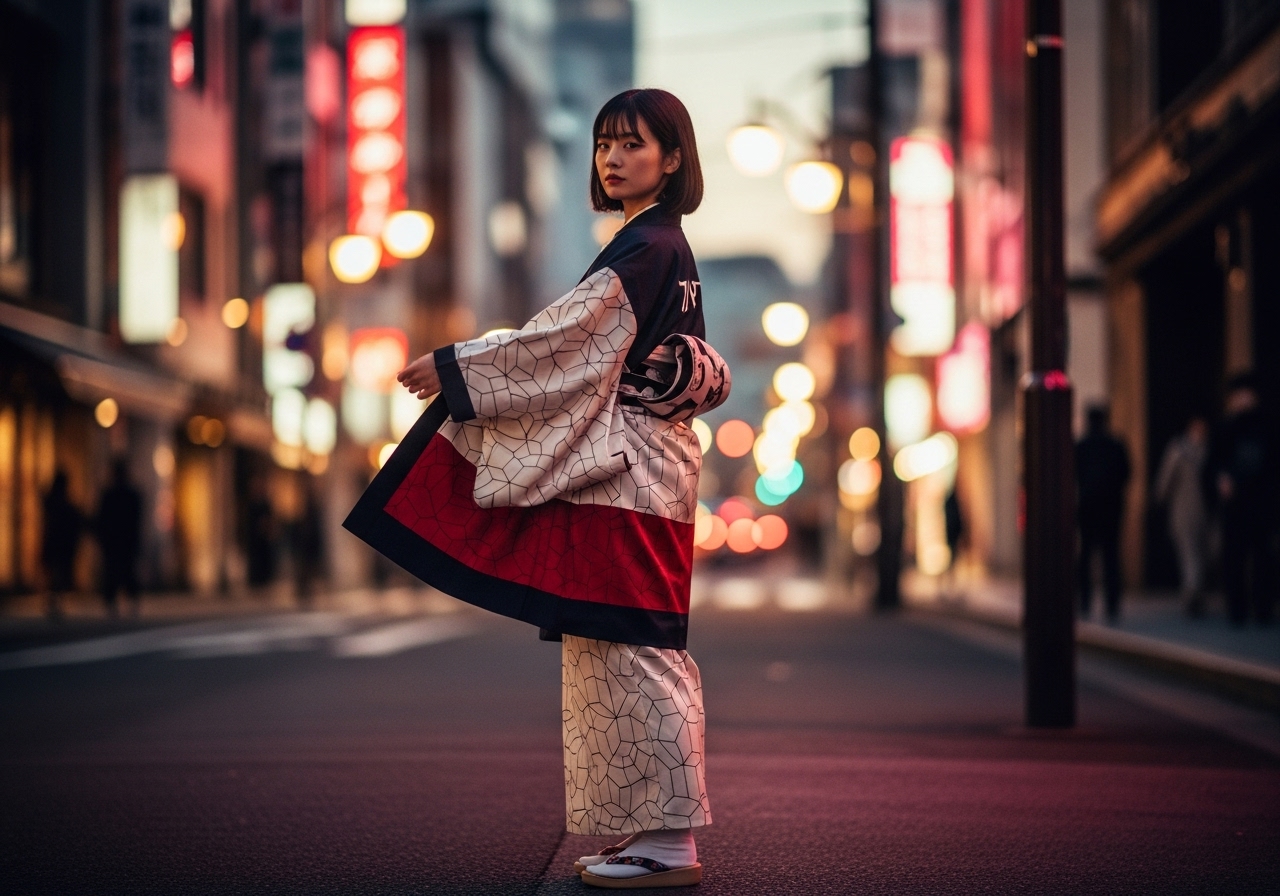
From Kimono to Cosplay: How Anime Turned Tradition into Style
What was once a formal garment worn in temples and tea houses has now become a global fashion symbol — thanks, in part, to anime.
From Demon Slayer to Spirited Away, Japanese animation has reintroduced the kimono to the world — not as an artifact of the past, but as a living, wearable form of storytelling.
In 2025, the kimono isn’t just tradition. It’s trend, identity, and art — woven into the fabric of global pop culture.
1. The Kimono Was Never “Just Clothing”
The kimono has always carried meaning.
Each pattern, color, and motif — from cranes symbolizing longevity to waves representing perseverance — tells a story.
In Japan, the act of wearing one expresses not only beauty but respect, balance, and seasonal awareness.
For centuries, that symbolism remained local.
Then came anime — Japan’s most powerful cultural export — and suddenly, millions around the world were seeing those meanings in motion, through characters they loved.
2. How Anime Reimagined the Kimono
The shift began in the early 2000s, with classics like InuYasha, Rurouni Kenshin, and Spirited Away.
Their characters wore traditional clothing not as “costumes,” but as expressions of personality and narrative.
In Spirited Away, Chihiro’s pink work kimono marks her transformation from innocence to resilience.
In Rurouni Kenshin, Kenshin’s red haori contrasts his pacifist nature — a visual echo of his internal struggle.
In InuYasha, the white-red kimono (hitoe) represents both purity and danger — timeless dualities in Japanese folklore.
These details weren’t lost on viewers.
They gave Western audiences their first real exposure to the depth of Japanese clothing — and made the kimono feel emotionally alive again.
3. The Demon Slayer Effect: Fashion Meets Myth
When Demon Slayer: Kimetsu no Yaiba premiered in 2019, it sparked what experts now call “the kimono renaissance.”
Its visual world — bold patterns, intricate layers, and historical authenticity — turned traditional attire into pop fashion.
Each character’s outfit has hidden meaning:
Tanjiro Kamado’s green and black checkered haori symbolizes balance and perseverance.
Nezuko’s pink asanoha (hemp leaf) pattern represents growth and protection.
Rengoku’s flame kimono reflects passion and moral strength.
These visual cues resonated deeply — so much that Demon Slayer-inspired kimono prints began appearing in streetwear, cosplay, and luxury fashion.
By 2022, online searches for “kimono jacket Demon Slayer” had grown over 700% globally (Google Trends).
Japanese textile shops even reported a spike in sales for traditional asanoha fabrics — the same pattern Nezuko wears.
4. Cosplay: The Bridge Between Culture and Fashion
The rise of cosplay — dressing as fictional characters — transformed how the world interacted with Japanese clothing.
At events like Anime Expo (Los Angeles), Japan Expo (Paris), and Comic-Con, thousands of fans now wear kimonos, yukata, and haori not as “costumes,” but as tributes.
Unlike imitation, cosplay is participatory appreciation.
It’s a global community that learns how to wear, fold, and move in traditional garments — often more accurately than expected.
Many cosplayers source their outfits directly from Japanese vintage stores or Kyoto rental shops, preserving traditional craftsmanship while giving it new life.
This blending of fandom and fashion has turned the kimono into what scholars call a “transcultural icon” — a shared symbol of creativity between Japan and the world.
5. When Anime Meets Runway
Fashion houses have noticed.
In 2021, Dior collaborated with Japanese artist Kim Jung Gi on kimono-inspired pieces for its Tokyo Capsule Collection.
In 2023, Gucci introduced silk robes referencing Jujutsu Kaisen aesthetics, pairing them with modern tailoring.
In 2024, Vogue Japan’s April issue featured models wearing Demon Slayer-patterned haori in Kyoto’s Gion district — a mix of heritage and high fashion.
Meanwhile, smaller Japanese brands like Rumi Rock and Modern Antenna are turning anime motifs into wearable art for a new generation of fans.
Their collections blend manga-style graphics with traditional kimono weaving — bridging street culture and craftsmanship.
6. Cultural Exchange, Not Appropriation
As the kimono spreads worldwide, conversations about cultural respect have grown louder.
Japan’s own designers are leading the dialogue — teaching, collaborating, and reinterpreting the garment authentically.
For example, Kyoto’s Chiso Company, one of Japan’s oldest kimono makers (est. 1555), now partners with global creatives to educate them on fabric symbolism and dyeing traditions.
The result? A new kind of cross-cultural fashion that honors heritage while embracing innovation.
“We’re not exporting the kimono,” says Chiso’s creative director Naoko Yamashita.
“We’re sharing its heart — the idea that clothing connects people.”
7. From Screen to Street: Everyday Kimono Revival
Walk through Shibuya, Seoul, or Paris’s Marais district today, and you’ll spot modern kimono jackets styled with sneakers, denim, or corsets.
Influencers like @TokyoMori, @MikanKimono, and @WearJapanDaily are turning traditional silhouettes into fashion statements for Gen Z audiences.
Even major retailers like UNIQLO, ZARA Japan, and Urban Outfitters now carry kimono-inspired outerwear — proof that what began as fandom has evolved into fashion culture.
8. What This Means for the Future
The kimono’s journey from anime to everyday fashion isn’t about commercialization.
It’s about connection.
Anime made the kimono relatable.
Cosplay made it accessible.
Fashion made it universal.
Together, they turned an ancient garment into a 21st-century symbol of identity — something that transcends geography, language, and trend cycles.
Final Thoughts: Tradition, Translated
The kimono was once a garment of silence — graceful, composed, deeply personal.
Anime gave it a new voice.
Now, every cosplay, every runway, every Instagram photo continues the same story — a celebration of Japanese artistry told through fabric and imagination.
From Kyoto’s looms to Comic-Con’s halls, the kimono reminds the world that tradition doesn’t have to stay still.
It can move, transform, and shine again — one sleeve, one fan, one story at a time.
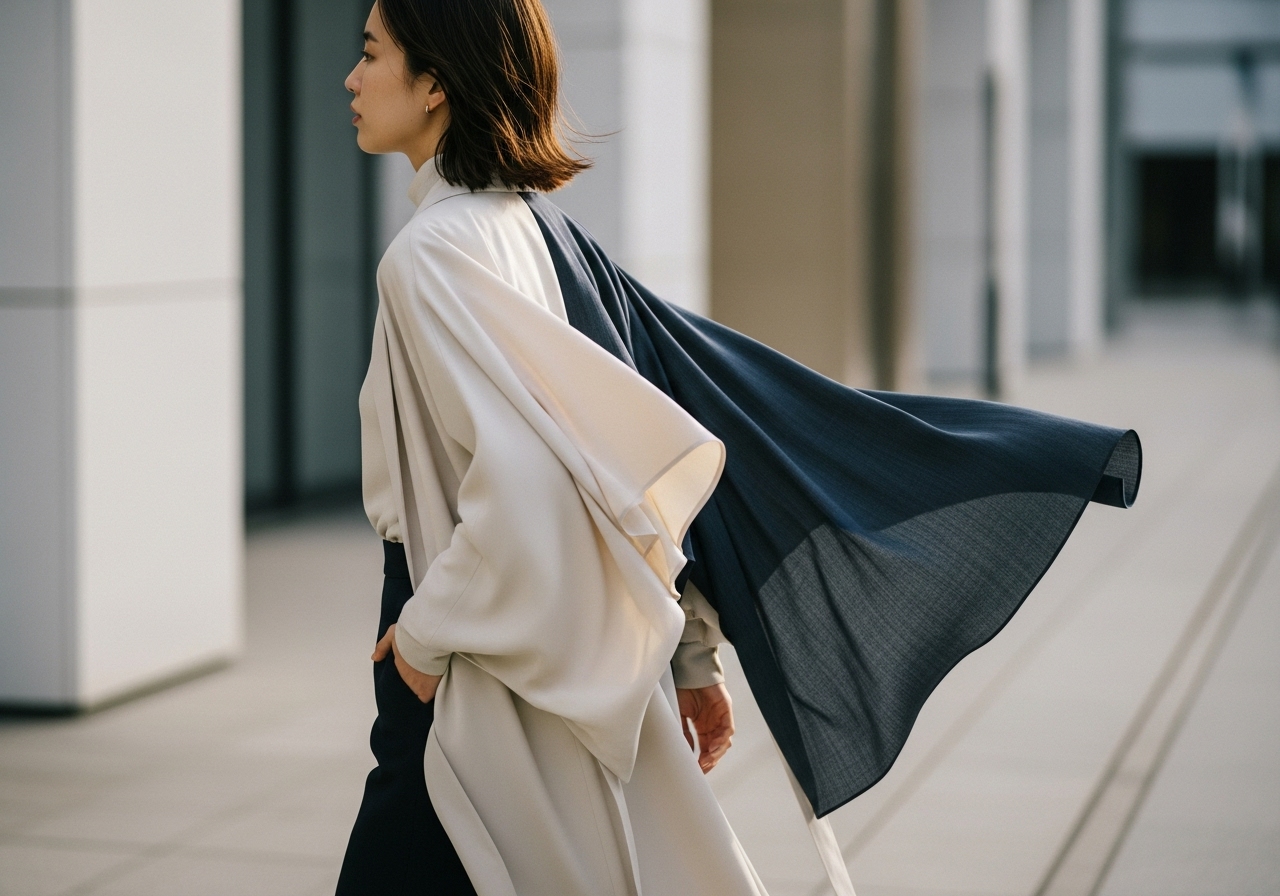
Kimono Sleeves Trend: The Japanese Silhouette Dominating Western Fashion
The fashion world has always borrowed ideas from the East, but in 2025, it isn’t embroidery, prints, or fabrics leading the wave — it’s the sleeves.
Wide, fluid, and impossibly elegant, kimono sleeves have become the most influential silhouette of the year, appearing everywhere from minimalist Scandinavian labels to luxury Parisian runways.
It’s more than a design revival — it’s a shift in mindset.
The kimono sleeve represents movement, mindfulness, and the quiet power of less structure — ideas the modern world desperately craves.
???? 1. What Exactly Are Kimono Sleeves?
Originally, kimono sleeves (sode) were cut as one continuous piece of fabric with the body, allowing a natural drape that followed the arm’s motion.
They weren’t tailored for fit — they were designed for flow.
In contrast to Western sleeve construction (which defines the shoulder line), the kimono sleeve softens the human form, creating harmony between body and fabric.
That effortless grace has now inspired a generation of Western designers who are embracing looseness over restriction.
“Kimono sleeves are about freedom, not fashion,” says British designer Stella McCartney, whose 2025 resort collection featured organic silk blouses with Japanese-inspired sleeves.
“They let the body breathe — physically and emotionally.”
???? 2. The Rise of the Kimono Silhouette in 2025
Searches for “kimono sleeve dress” and “kimono sleeve top” have doubled year-over-year (Google Trends, 2025).
Runway reports from Copenhagen, Milan, and New York show the same trend: wider sleeves, boxier shoulders, and more fluid tailoring.
Here’s where it’s taking over:
The Row: Using neutral palettes and soft crepe, the Olsen twins revived the kimono sleeve coat for luxury minimalists.
Totême (Sweden): Introduced a kimono-sleeve trench in their SS25 collection, merging Japanese drape with Scandinavian restraint.
Tomo Koizumi (Japan): Sent technicolor organza kimonos down the runway in Paris, blurring art and fashion.
COS & Arket: Mass-market retailers have released capsule lines of kimono-sleeve cardigans and wrap tops — translating the look into everyday wear.
Even streetwear brands like Ader Error and Maison Kitsuné are adopting the shape, styling it with high-waisted pants and platform shoes for a structured-meets-fluid aesthetic.
???? 3. Why Western Designers Are Obsessed
✨ a. Freedom of Movement
After years of corseted silhouettes and “clean-girl minimalism,” fashion has shifted toward comfort with intention.
Kimono sleeves move with the body — they’re expressive, cinematic, and photogenic.
They flow in the wind and fold naturally when you walk — perfect for social media aesthetics and lifestyle campaigns.
???? b. Mindful Design
The silhouette reflects the global sustainability mindset.
It doesn’t force the body; it respects it.
The design requires less cutting and waste, since the sleeve and torso can be cut from one continuous panel — aligning perfectly with zero-waste design philosophies now championed by eco-conscious designers.
???? c. Cultural Influence
Japanese culture has long valued balance, impermanence, and fluidity — ideas expressed through clothing.
Western fashion is now catching up, not through imitation, but through philosophical alignment.
Designers reference the kimono not as costume, but as concept: serenity in motion.
???? 4. Celebrity and Pop Culture Impact
The moment that cemented the kimono sleeve’s comeback?
When Zendaya appeared at the 2024 Venice Film Festival in a custom Louis Vuitton kimono-sleeve gown — a modern reinterpretation of traditional Japanese draping.
Soon after, Florence Pugh and BLACKPINK’s Jisoo wore similar silhouettes on red carpets and magazine covers.
On TikTok, the hashtag #Kimonosleeve surpassed 90 million views in early 2025.
Creators showcase easy DIY tutorials for transforming oversized shirts into kimono-style jackets — proving that this trend isn’t just luxury, it’s accessible creativity.
???? 5. From Haute Couture to Homewear
The appeal of kimono sleeves extends far beyond formal fashion.
In 2025, they define both comfort and sophistication.
At home: Linen kimono robes dominate wellness and spa collections from brands like Oysho and Eiyo Kimono UK.
At work: Fluid-sleeve blazers and cardigans create relaxed professionalism for hybrid offices.
At events: Kimono-sleeve wrap dresses offer elegance without effort — worn by influencers and executives alike.
The same shape seamlessly transitions from morning rituals to night events, reflecting how lifestyles have become more fluid — just like the sleeves themselves.
???? 6. The Cultural Line Between Inspiration and Appropriation
As the silhouette gains traction, designers are also learning to treat its origins with care.
Many brands now collaborate with Japanese artisans to credit their sources.
For example, London’s Victoria & Albert Museum held the 2024 exhibition “Reinventing the Kimono,” featuring cross-cultural collaborations where Western designers worked alongside Kyoto dyers and textile historians.
Such projects ensure the design’s authentic spirit — respect, simplicity, continuity — remains intact.
Fashion journalist Aya Watanabe notes:
“The kimono sleeve isn’t about copying Japan. It’s about learning from its rhythm — the way fabric and air can coexist.”
????️ 7. Why the Kimono Sleeve Is Here to Stay
The modern kimono sleeve hits the perfect intersection of art, comfort, and consciousness.
It’s flattering on every body type, sustainable by nature, and steeped in storytelling.
Unlike fleeting Y2K revivals, it speaks to something deeper — a universal desire for calm and connection in an overstimulated world.
That’s why fashion houses from Hermès to JW Anderson are building collections around it — not as a novelty, but as a new design foundation.
???? Final Thoughts: When Fabric Becomes Philosophy
In an era where fashion often feels disposable, the kimono sleeve reminds us that design can have meaning.
It teaches that movement is beauty, that balance is elegance, and that clothing can express peace, not just power.
So next time you slip into a kimono-sleeve blouse or coat, take a moment to feel how it moves —
not around you, but with you.
That’s the secret behind why this 1,200-year-old Japanese silhouette is quietly dominating Western fashion in 2025 — not through noise, but through grace.
